Explorers throughout history have gone on expeditions to places that nobody has ever been in search of new territories and discoveries. Some explorers spent years of their lives exploring new territories and returning to report their findings. Others went to unfounded territories and vanished, never to be heard from again. Here are ten of the most famous expeditions that the brave and courageous people have went on and how they helped us understand what else is out there.
Sir Edmund Hillary and Mount Everest
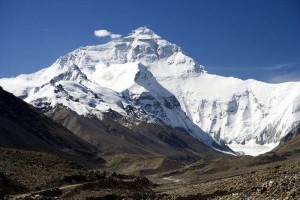 One of the most famous expeditions in the world was Sir Edmund Hillary’s exploration and climbing of Mt. Everest. He is known as the first man to reach the summit of the world famous Mt. Everest, but he wasn’t always just a mountain climber.
One of the most famous expeditions in the world was Sir Edmund Hillary’s exploration and climbing of Mt. Everest. He is known as the first man to reach the summit of the world famous Mt. Everest, but he wasn’t always just a mountain climber.
Edmund Hillary, who was born in 1919, studied science and math at the University of Auckland in New Zealand. Soon after finishing his studies, Hillary became a beekeeper, working with his brother Rex. During this time, he and Rex also climbed mountain summits to explore different areas. Hillary then joined the Air Force after World War II began. However, before his application was even processed, he withdrew it.
In 1953, Hillary got the idea that he wanted to climb the world’s highest peak – Mt. Everest. At the time he first started to get the urge, however, the mountain was closed through Tibet. The other route, which was in India, only allowed one expedition per year. He had to wait until later in the year when the British made a trip to Mt. Everest.
The entire expedition had more than 350 porters, five tons of baggage, and 20 Sherpa guides. There were two teams leading the expedition. One was led by a man named Charles Evans and Tenzing Norgay. The latter is the one with whom Hillary was teamed. The first team to get close to the summit was Evans’ team, but they only got within 100 meters of it before getting exhausted and descending back down the mountain.
Hillary and Norgay began their trip up the mountain two days later. They reached the summit of Mt. Everest at 11:30 a.m. local time on May 29, 1953. Hillary is credited with the first to reach the summit because he planted his foot on it first. The duo took some photos and also buried some candies and a small cross on the spot before they regrouped and headed back down the mountain. On the way back down, George Lowe, one of Hillary’s friends from childhood, was waiting for them with some hot soup.
Hillary was later knighted for his accomplishment and Queen Elizabeth II awarded Norgay with the George Medal. Hillary also went on to be one of the founding members of the Order of New Zealand.
Christopher Columbus Searches for the New World
One of the most famous and controversial expeditions is Christopher Columbus and his search for the new world. In all, he crossed the Atlantic Ocean four times in hopes of finding a direct water route that could be used for trading between Europe and Asia, but he was never successful at it. He did, however, accidentally stumble on the Americas, which is why is often credited with “discovering” America. While he may not have been the first to discover the Americas, his findings helped create an interest in the region for colonization and conquest.
Columbus was a major part of the Age of Discovery, which was at its peak during the 15th and 16th centuries. The Portuguese participated in the explorations early in hopes of finding great wealth and 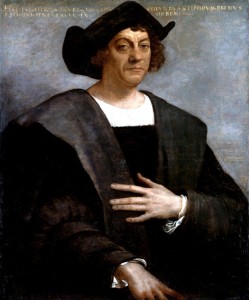 fame in exploring new lands. They began sending ships out around 1420.
fame in exploring new lands. They began sending ships out around 1420.
In 1491, Christopher Columbus had an idea that was different than what the Portuguese had been doing for decades. He thought if he could sail west across the Atlantic instead of going all the way around the African continent, he could find the New World. When the officials in Portugal would not entertain his idea, he went to Ferdinand of Aragon and Isabella of Castile of Spain, who listened to what he had to say. In addition to fame and fortune, the monarchs and Columbus wanted to spread Catholicism to new areas of the world.
Columbus and his crew of three ships – the Nina, the Pinta, and the Santa Maria, set sail on August 3, 1492. More than a month later, on October 12, they reached land. Columbus had assumed they landed in Asia, but they had actually landed in the Bahamas. For the next few months, he sailed amongst the different islands in the Caribbean looking for treasures that he had promised to bring back. But he found very little.
Roald Amundsen and the Northwest Passage
Roald Amundsen was one of the most well-known explorers who tried to find the Northwest Passage. Many explorers over hundreds of years (at least since 1539 when Hernan Cortez commissioned a search for it) have searched for the Northwest Passage, which is a route that runs through the Arctic Ocean to connect the Atlantic and Pacific Oceans. Amundsen was the first explorer, however, to navigate this hard to find passage which created faster and more efficient trade.
Amundsen’s parents were Norwegian ship owners and Roald promised his mother that he would go into the medical field, possibly becoming a doctor, when he was of age. But after his mother passed away, Roald joined the family’s business. He went on his first expedition in 1897 and it lasted until 1899 in the Belgian Antarctic. A few years later, in 1903, he was the lead person in a search for the Northwest Passage.
When Amundsen began his expedition to search for the Northwest Passage, he had six crewmen with him. They set sail in Gjoa, a 47-ton seal hunting ship made mostly of steel. The trip began in Baffin Bay. After passing through Resolute and then Gjoa Haven, the crew sailed around the southern region of Victoria Island. Along the way, they also sailed near the northern Canadian cost and ended up in Eagle City, Alaska. It was from here that Amundsen sent a message back describing his success in December of 1905. The men spent the rest of the winter in Eagle City before sailing off to Nome in 1906.
While spending time in Nome, Amundsen and his crew received word that Norway was now independent of Sweden. Following this realization, Amundsen sent Norway’s new king – King Haakon VII – that finding the Northwest Passage was a huge success for the nation of Norway. Amundsen didn’t stop with the Northwest Passage, though. He would later go on to become the first explorer to fly over the North Pole and the first one to reach the South Pole.
Charles Darwin and the Galapagos Islands
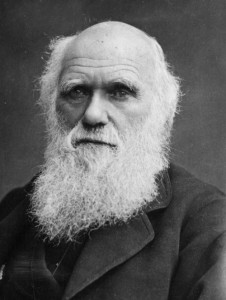 Charles Darwin, the author of the controversial work On the Origin of Species, went on a five-year expedition on the HMS Beagle while researching his theory and looking for evidence to support it.
Charles Darwin, the author of the controversial work On the Origin of Species, went on a five-year expedition on the HMS Beagle while researching his theory and looking for evidence to support it.
Darwin was born in 1809 and he showed a great interest in the field of natural history at a young age. When he was college-aged, he began attending the University of Edinburgh Medical School. Before long, he began studying marine invertebrates at the University of Cambridge. This gave him the encouragement and motivation to go on a voyage on the HMS Beagle with Charles Lyell.
The expedition, which also included captain Robert FitzRoy, began on December 27, 1831. For much of the expedition, Darwin was collecting information and pieces of natural history as well as investigating the geology of the area. The journey went from Portsmouth, England to Santiago, Cape Verde. From there, it went along the coastline of Brazil, Punta Alta, Chile and the Galapagos Islands. The journey also sailed along Australia’s southern coast, around the Keeling Islands and to Cape Town, South Africa.
Darwin took note of the thousands of species that he found during the five-year voyage. When he returned home, he cataloged and organized his findings and collections which became the basis for his work – On the Origin of Species – which spelled out his theory for evolution and the idea of natural selection. This became his defining work and one of the most influential science books in the history of the world.
Magellan’s Journey around the World
Born in Portugal in 1480, Magellan went on to become the first explorer to circumnavigate the earth. Magellan’s parents both passed away when he was a young age. As a result, he became one of Queen Leonor’s pages until he reached the age of an adult.
In September of 1519, Magellan set sail on a westward voyage that would circumvent the tip of South America’s coastline with his friend and astronomer, Ruy de Falero. The journey lasted until 1522, just two days short of three full years. The journey began from Seville, Spain and it included five ships, named the Victoria, Santiago, Concepcion, Trinidad and San Antonio. However, the Victoria is the only ship that returned to Spain with the voyage. Only 18 of the 270 crew members were alive when the journey was completed and Magellan was even killed before reaching home during a brutal battle with natives in the Philippines.
The Search for Livingstone
During the 1800s, Americans and Europeans had a fascination with Africa, or as it was commonly referred to, the “Dark Continent.” People felt that it was very mysterious and they wanted to know more about it. One British explorer – Dr. David Livingstone – was set on exploring the continent to learn what it was all about. He began his expedition of the African continent in August of 1865 and he expected his task to last for two years. His main goal was to find the Nile River’s source, but he also wanted to do what he could to help shut down the slave trade as it was becoming highly detrimental to the continent’s population.
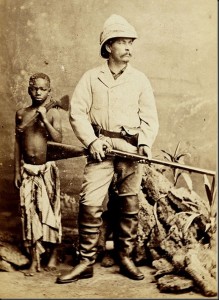 After six years had passed since he left on his expedition, people started wondering what happened to him. The editor of the New York Herald – James Gordon Bennett, Jr. – sent journalist Henry Morton Stanley on an expedition to seek out Dr. Livingston in Africa. He was given the task of leading the expedition to find Livingstone either dead or alive.
After six years had passed since he left on his expedition, people started wondering what happened to him. The editor of the New York Herald – James Gordon Bennett, Jr. – sent journalist Henry Morton Stanley on an expedition to seek out Dr. Livingston in Africa. He was given the task of leading the expedition to find Livingstone either dead or alive.
Stanley set out on his journey from Zanzibar in March of 1871. He had a crew of about 2,000 men as he sailed toward the depths of Africa. The expedition took eight months to reach the shores of the continent, during which time Stanley came down with cerebral malaria, smallpox, and dysentery. They landed at the village of Ujini, the last place that Livingstone was known to be, on October 27. The crew arrived waving the American flag as a crowd gathered to take notice. Stanley spotted a white man sporting a gray beard and approached him. He stuck out his right hand and said, “Dr. Livingstone, I presume?”
Those words became famous in the United States and Europe. Stanley tried to convince Livingstone to come back to London with him, but Livingstone wanted to continue exploration of the continent. However, he died only 18 months later and his body was returned to England. He is buried in Westminster Abbey. Stanley, on the other hand, made another expedition to Africa soon after Livingston’s death. His goal: to make good on his promise he made to Livingstone to find the source of the Nile River.
Lewis and Clark Explore the West
In 1803, the United States literally doubled in size due to the famous Louisiana Purchase. Nobody knew what this region had to offer so someone had to explore it. Even while negotiations with France were still going on, President Thomas Jefferson commissioned William Clark and Meriwether Lewis to explore the expansive territory that, until their exploration of it, had been uncharted.
In May of 1804, Lewis and Clark began their journey in St. Louis, Missouri, and they traveled up the Mississippi River until they reached the Pacific Ocean. Their expedition covered about 8,000 miles of territory over three years. The team of explorers and crew members was called the Corps of Discovery and they traveled along the Ohio River, the Missouri River as well as the Mighty Mississippi. The crossed the Continental Divide and explored many areas during their famous expedition.
The Lewis and Clark expedition faced many challenges and obstacles during the three year journey. The waters that they traveled on were dangerous and the bad weather did not help at all. The crew fell ill to hunger, fatigue and injury.
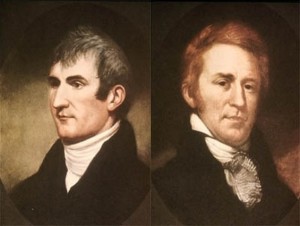 Lewis was the scientist of the duo. His main job was to collect evidence about the botanical, geographic, zoological and meteorological nature of the new territory that they were exploring. He kept samples and a detailed journal of various plants and animals that they encountered, too. Many of the native peoples that the crew met along the way helped with Lewis’s collections. The expedition even picked up two members from a native tribe – Sacagawea and Touissant Charbonneau. These two new helpers were integral in interpreting during the expedition so the natives and the crew could understand each other.
Lewis was the scientist of the duo. His main job was to collect evidence about the botanical, geographic, zoological and meteorological nature of the new territory that they were exploring. He kept samples and a detailed journal of various plants and animals that they encountered, too. Many of the native peoples that the crew met along the way helped with Lewis’s collections. The expedition even picked up two members from a native tribe – Sacagawea and Touissant Charbonneau. These two new helpers were integral in interpreting during the expedition so the natives and the crew could understand each other.
In November of 1805, Lewis and Clark’s expedition finally reached the Pacific Ocean. Once they got settled, they built a fort and named it Fort Clatsop. The spent the winter in what is now Oregon. Once the winter was over, the crew decided to head back towards home. But they decided to split up and explore other areas in hopes of finding faster routes. The crew that went with Meriwether Lewis faced many problems on the way back. For one thing, a group of Blackfeet Indians tried to steal from the expedition in the summer of 1806. Two of the tribe’s men were killed during this conflict. Shortly after, one of the crew member’s with Lewis accidentally shot him in the thigh while they were out hunting.
Lewis and Clark rejoined along the way at the Missouri River. They journeyed back to St. Louis as a team. When they arrived home, they were hailed as heroes. Many towns threw celebrations and parties to celebrate their accomplishment as the Corps of Discovery made its way to the nation’s capital to be recognized. Lewis received a payment for his efforts and he was named the governor of the Louisiana Territory.
Neil Armstrong Explores the Moon
July 20, 1969 is a day that will forever go down in the history books as a day that changed the world forever. That was the day that American astronaut and explorer Neil Armstrong was the first person to step foot on the moon.
The moon is located almost 240,000 miles from the Earth. Armstrong and his crew, which included fellow astronauts and pioneers Michael Collins and Edwin “Buzz” Aldrin, began their journey into space on the Apollo 11 Lunar Module on July 16, 1969. Armstrong was the commander of the mission and he was the one who piloted the craft to the surface of the moon. At almost 11 p.m. on July 20, 1969, Armstrong exited the craft and set foot on the moon, uttering the now famous quote, “That’s one small step for man, one giant leap for mankind.” However, it was later stated that he meant to say it the other way around – “That’s one small step for mankind, one giant leap for man.”
Aldrin later exited the Apollo 11 Lunar Module as he and Armstrong collected samples from the moon that they could bring back to Earth with them and analyze. In addition, they took photographs of the moon and its surroundings as well as their footprints on the moon. Michael Collins, the third member of the crew, remained in the command module during this time.
The mission began its return from the moon on July 24, 1969, four days after its historic landing. The Apollo 11 returned, landing just west of Hawaii in the Pacific Ocean. The three-member crew was put into quarantine for three weeks following the return just to be sure they were not carrying any unknown diseases or illnesses. After all, it was the first time the moon had been explored so nobody really knew what to expect. Following the quarantine, they were treated as heroes. They received a ticker-tape parade in New York City and Armstrong received various prestigious awards, including the Congressional Space Medal of Honor and the Medal of Freedom.
Amelia Earhart Flies Over the Atlantic Ocean
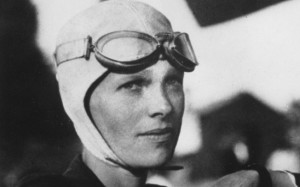 Amelia Earhart was only the 16th woman in the enter world to be given a pilot’s license. She became famous in 1928 when she became the first woman to fly across the entire Atlantic Ocean, but she was also famous for being the first person to fly over both the Pacific and Atlantic Ocean as well.
Amelia Earhart was only the 16th woman in the enter world to be given a pilot’s license. She became famous in 1928 when she became the first woman to fly across the entire Atlantic Ocean, but she was also famous for being the first person to fly over both the Pacific and Atlantic Ocean as well.
Other than her great accomplishments as an airplane pilot, Amelia Earhart is also known because she disappeared during her last expedition. She had planned on circumnavigating the entire globe at the equator. She knew that she would not be the first person known for flying around the planet, but she would have been the first to do it at the equator.
In order to accomplish this feat, Earhart gathered a crew of three men – Fred Noonan, Paul Mantz, and Captain Harry Manning. She had a reason for choosing each person. Manning, for instance, was the captain of the ship that she was on when she returned home from Europe in 1928. Mantz was a stunt pilot in Hollywood and he served as Earhart’s technical advisor. Noonan had a great deal of experience in flight and marine navigation which Earhart felt would be useful during her expedition.
Earhart planned on starting in Oakland, CA and flying west to Hawaii. The group would then fly across the Pacific until it reached Australia. From there, the crew had planned to fly across India and then to Africa. From Africa, it would fly to Florida and then return to its starting point in California. The expedition began on March 17, 1937. The first leg took off with no problems, although there were a few minor issues as they flew across the Pacific. They landed safely in Hawaii and stayed there for three days. When they began to take off for the next leg of the trip, something went wrong. Earhart lost control of the plane on the runway and damaged it severely.
Trying to find funding for a new flight and the delay of the expedition was stressful on Earhart. By the time they got the plane repaired, their original plans had to change due to changing weather patterns and changes in the wind. When she left on the second leg, two crew members – Mantz and Manning – had to back out due to various issues.
The new flight went from California to Miami on June 1. It then went towards South America and then Africa. It flew across the Indian Ocean and landed in New Guinea on June 29, 1937 after completing more than 20,000 miles of the journey. It still had about 7,000 miles to go over the Pacific Ocean. But while in New Guinea, Earhart came down with dysentery which lasted several days. The last part of the ill-fated journey began on July 2. The last time anyone heard any correspondence from Earhart and Noonan was during the morning of July 3, 1937. Credible theories state that Earhart had inaccurate maps which took them off course. Both Noonand and Earhart disappeared.
Zheng He’s Expeditions with the Treasure Fleet
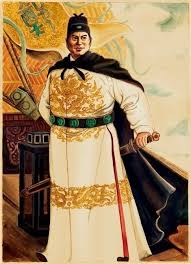
Zheng He is best known for being a Chinese explorer during the 14th century during the Ming dynasty. The emperor of China sponsored Zheng He to lead seven naval expeditions. The Chinese were hoping to impress the rest of the world by traveling to other countries and showing how well its explorers knew the Indian Ocean.
Zheng He’s first expedition began in 1405 and went around several nations in the southeast region of the world, including Indian, before it returned home after two years of travel. His second voyage lasted from 1407 until 1409 with his third being from 1409 until 1411. Both of these voyages reached the west and east coasts of India. Zheng He’s sixth voyage, which lasted from 1421 until 1422, he focused on creating diplomatic relations with some of the Arabian countries as well as East Africa.
Zheng He’s expeditions had great significance for the Chinese empire. For one thing, it established him as a hero throughout the nation who would be remembered for expanding the influence of the Chinese to other parts of the world. People in the nations that he sailed around could see him coming for miles with more than 60 huge ships, 150 smaller ships and many more warships, water tanks and treasure ships. His crew also included about 28,000 men. He also conducted research about the territories his expeditions covered and returned that information to China to prepare sailing charts, almanacs and maps.
Overall, his voyages covered 30 nations and established trade routes that extended more than 2000 miles. He explored other cultures and the geography of other nations to help China learn more about the world. For his time, these journeys were unprecedented and they are still a testament to China’s power during that period.